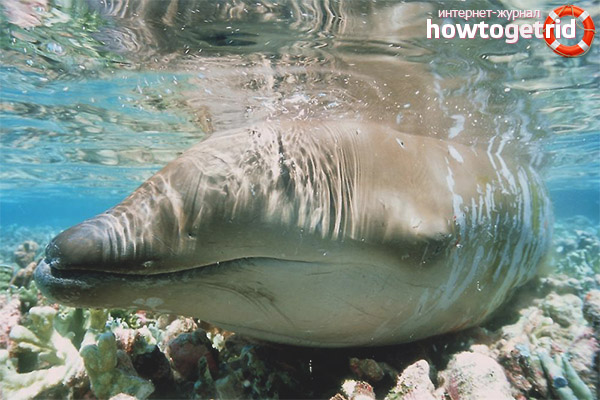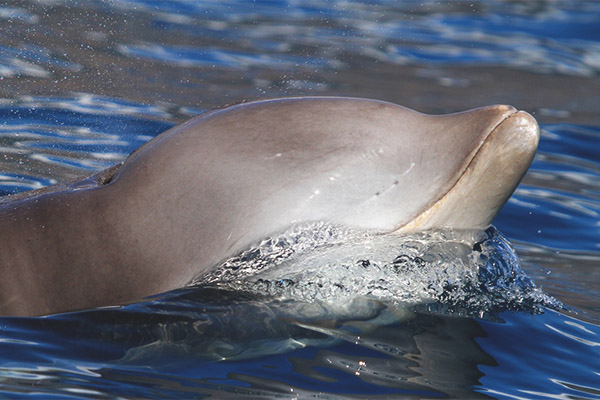The content of the article
Very little is known about the world of the ocean. He hides a lot of secrets. His obscurity is often compared to Cosmos. Only a small part of the flora and fauna of the ocean is known. Many species of animals are not studied or poorly understood. A striking example is whale Kluvoryl - a representative of cetaceans. His other name is Cuvier Cluvorul. Due to similar traits with other species, it is difficult for zoologists to study the behavior and abundance of the animal. In this regard, information about the representatives is extremely small. The problem is that scientists can most often explore the species only at a great distance. This method has many drawbacks, and one of them is a defective data collection.
Appearance
The whale is of medium size. In length individuals can reach 7 meters, and in weight - 3 tons. As a rule, females are slightly larger than males. The body is elongated and has a spindle shape.A large head is about 10% of the entire length of the body. The beak is rather thick. Adult males have 2 large canines on the lower jaw about 8 cm long. Females do not have such canines. However, some of the studied individuals had 15-40 rudimentary teeth. On the neck of the beak are located grooves for breathing. Cubs are born large - about 2.1 meters.
Small flippers are circular. If necessary, the whale puts them in special grooves on the body, the so-called flipper pockets. Upper fin high, similar to shark, can reach 40 cm.
Color depends on the habitat. In the Pacific and Indian oceans, individuals of brown and dark yellow shades swim. The Atlantic is inhabited by a gray-blue beak with a changed head shape and dark spots around the eyes. The abdominal part of the body is paler than the dorsal. The head is almost always white.
Habitat and abundance
The species is also widespread in the closed seas: the Sea of Okhotsk, the Caribbean and the Japanese. The Gulf of California and Mexico are another habitat for Kluvorel. This species is the only cetacean that lives in the Mediterranean. However, individuals do not occur in the Baltic and Black Seas.
The exact number is difficult to establish. In 1993, in the course of studying several habitats, 20,000 individuals were identified in the east and in the tropics of the Pacific Ocean. It was later repeated research. This time the scientists included all the missing individuals, and the number was 80 thousand. Only in the area of Hawaii, there are about 17 thousand individuals.
Klyuvoryl is one of the most widespread cetaceans in the world. Information on the exact population size is not available. However, according to approximate calculations, it can be concluded that there are about 100 thousand individuals in the entire World Ocean.
Demeanor

Klyuvoryly prefer steep seabed in continental waters. Although some representatives of the species are found at a depth of 200 meters. As shown by Japanese research, most often whales, beak-cocks live in great depths.The specimen can be found in the closed seas and near oceanic islands. Near the coast of the mainland, beaks are rarely seen. However, exceptions include areas with deep coastal waters, as well as canyons. The species belongs to pelagic creatures (dwells deep in the ocean), the isotherm is 100C, and the contour is 1000M.
Diet
Like all members of the cetaceans, the beak is fed by the method of suction of prey near itself. He likes to hunt at great depths or deep in the ocean. There are data on the duration of the dive: about 40 minutes.
The favorite dish of whale are fish, squids and crustaceans. Information about the diet obtained after studying the digestive system of individuals.
Environmental impact
These cetaceans do not actively hunt. Rare cases when the beak falls into the paws of hunters. This cannot be called the rule, rather the exception to it.
It is not yet known how the change in the maritime climate affects the pecks, however, the fact of influence on the species is established.
Video: beak (Ziphius cavirostris)











To send